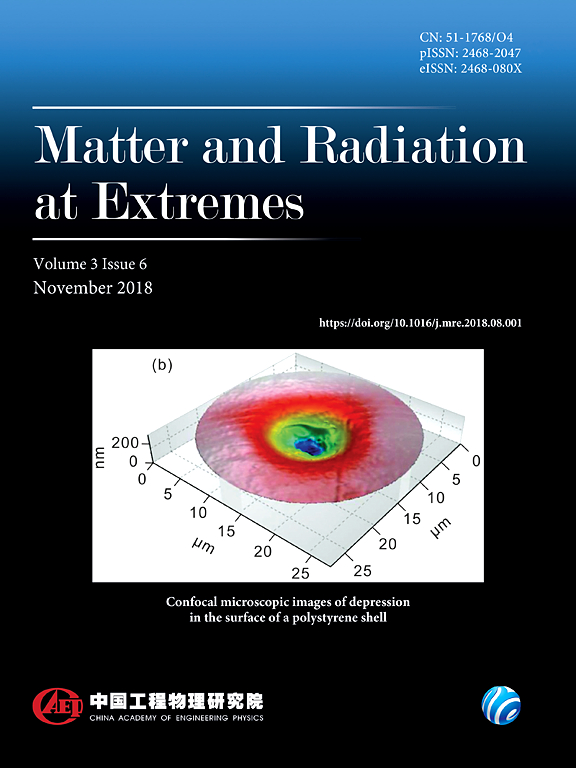Ab initio density response and local field factor of warm dense hydrogen
IF 4.7
1区 物理与天体物理
Q1 PHYSICS, MULTIDISCIPLINARY
引用次数: 0
Abstract
We present quasi-exact ab initio path integral Monte Carlo (PIMC) results for the partial static density responses and local field factors of hydrogen in the warm dense matter regime, from solid density conditions to the strongly compressed case. The full dynamic treatment of electrons and protons on the same footing allows us to rigorously quantify both electronic and ionic exchange–correlation effects in the system, and to compare the results with those of earlier incomplete models such as the archetypal uniform electron gas or electrons in a fixed ion snapshot potential that do not take into account the interplay between the two constituents. The full electronic density response is highly sensitive to electronic localization around the ions, and our results constitute unambiguous predictions for upcoming X-ray Thomson scattering experiments with hydrogen jets and fusion plasmas. All PIMC results are made freely available and can be used directly for a gamut of applications, including inertial confinement fusion calculations and the modeling of dense astrophysical objects. Moreover, they constitute invaluable benchmark data for approximate but computationally less demanding approaches such as density functional theory or PIMC within the fixed-node approximation.暖致密氢的 Ab initio 密度响应和局部场因子
我们展示了从固体密度条件到强压缩情况下,氢在暖致密物质体系中的部分静态密度响应和局部场因子的准精确ab initio路径积分蒙特卡洛(PIMC)结果。在同一基础上对电子和质子进行全动态处理,使我们能够严格量化系统中的电子和离子交换相关效应,并将结果与早期的不完整模型(如典型的均匀电子气体或固定离子快照电势中的电子)进行比较,这些模型没有考虑两种成分之间的相互作用。全电子密度响应对离子周围的电子定位高度敏感,我们的结果为即将进行的氢喷流和聚变等离子体 X 射线汤姆逊散射实验提供了明确的预测。所有 PIMC 结果均免费提供,可直接用于各种应用,包括惯性约束聚变计算和高密度天体物理建模。此外,它们还是近似但计算要求较低的方法(如密度泛函理论或固定节点近似中的 PIMC)的宝贵基准数据。
本文章由计算机程序翻译,如有差异,请以英文原文为准。
求助全文
约1分钟内获得全文
求助全文
来源期刊

Matter and Radiation at Extremes
Physics and Astronomy-Atomic and Molecular Physics, and Optics
CiteScore
8.60
自引率
9.80%
发文量
160
审稿时长
15 weeks
期刊介绍:
Matter and Radiation at Extremes (MRE), is committed to the publication of original and impactful research and review papers that address extreme states of matter and radiation, and the associated science and technology that are employed to produce and diagnose these conditions in the laboratory. Drivers, targets and diagnostics are included along with related numerical simulation and computational methods. It aims to provide a peer-reviewed platform for the international physics community and promote worldwide dissemination of the latest and impactful research in related fields.
 求助内容:
求助内容: 应助结果提醒方式:
应助结果提醒方式:


